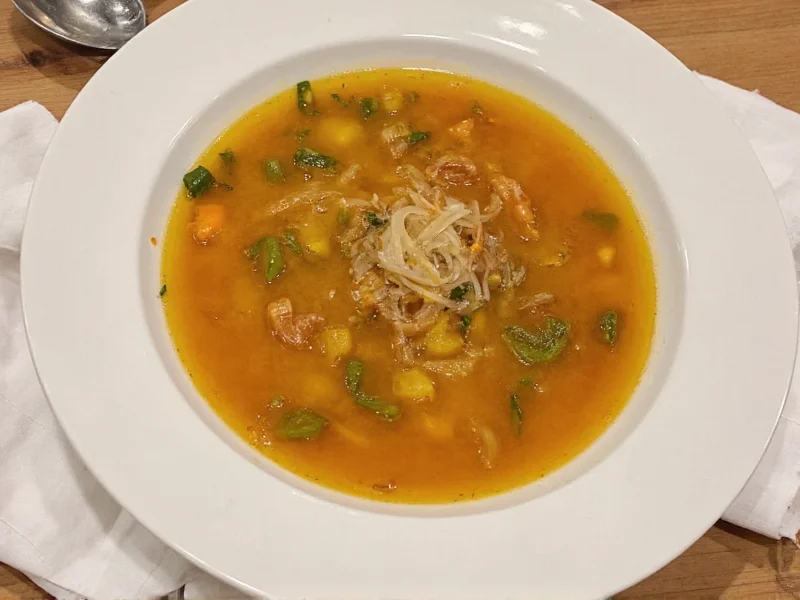The Timeless Appeal of French Onion Soup
French onion soup, or soupe à l'oignon, traces its origins to 18th century Paris where it was considered peasant food. Today, this humble dish has earned its place as a culinary classic served in fine dining establishments worldwide. The magic happens through patient caramelization—transforming simple onions into a complex, sweet foundation that defines the soup's character. Unlike quick versions that skip proper caramelization, the authentic approach rewards cooks with unparalleled depth of flavor that makes this traditional recipe worth the time investment.
Essential Ingredients and Why They Matter
Selecting quality ingredients makes the difference between ordinary and extraordinary onion soup. Understanding each component's role helps you make informed substitutions when necessary while maintaining authenticity.
| Ingredient | Quantity | Critical Function |
|---|---|---|
| Yellow onions | 4 lbs (about 6 large) | Primary flavor base; yellow onions provide ideal balance of sweetness and pungency |
| Unsalted butter | 4 tablespoons | Superior caramelization medium compared to oil; adds richness |
| Dry white wine | 1/2 cup | Acidity to balance sweetness; enhances flavor complexity |
| Beef broth | 6 cups homemade or quality store-bought | Provides savory depth; avoid overly salty commercial broths |
| Gruyère cheese | 1 cup shredded | Traditional melting cheese with nutty flavor that complements onions |
Step-by-Step Preparation Guide
Mastering French onion soup requires attention to technique rather than complexity. Follow these steps for restaurant-quality results in your home kitchen.
Onion Caramelization: The Foundation
Begin by thinly slicing 4 pounds of yellow onions (about 6 large). Melt 4 tablespoons of unsalted butter in a heavy-bottomed Dutch oven over medium heat. Add onions with 1 teaspoon of sugar and 1¼ teaspoons of salt. Cook slowly, stirring occasionally, for 40-45 minutes until deeply golden brown. This slow process develops complex flavors through the Maillard reaction—rushing it creates bitter, burnt onions rather than sweet, caramelized ones. Properly caramelized onions should reduce to about one-third their original volume with a rich mahogany color.
Building Flavor Layers
Once onions reach ideal caramelization, add 1/2 cup dry white wine to deglaze the pot, scraping up any browned bits from the bottom. Simmer until wine completely evaporates—this concentrates flavor without leaving alcoholic notes. Next, gradually add 6 cups of quality beef broth while scraping the pot to incorporate all fond. Add 2 sprigs fresh thyme and 1 bay leaf. Simmer uncovered for 30 minutes to allow flavors to meld. Remove thyme sprigs and bay leaf before serving.
Perfecting the Classic Finish
Preheat your broiler. Ladle hot soup into oven-safe bowls. Top each with a slice of baguette (toasted until crisp), then generously cover with shredded Gruyère cheese. Place bowls on a baking sheet and broil 4-6 inches from heat source for 2-3 minutes until cheese bubbles and develops golden spots. Allow soup to rest for 5 minutes before serving—this prevents burns from the extremely hot ceramic and allows cheese to set slightly.
Avoiding Common Onion Soup Mistakes
Even experienced cooks encounter pitfalls with this deceptively simple recipe. Understanding these frequent errors ensures success with your homemade French onion soup recipe:
- Rushing caramelization - Proper onion cooking takes 40-45 minutes minimum; shorter times yield pale, sharp onions without developed sweetness
- Using inappropriate cheese - Avoid pre-shredded cheese (contains anti-caking agents that prevent smooth melting); Gruyère provides ideal flavor and meltability
- Over-salting broth - Reduce added salt if using commercial broth, which often contains high sodium levels
- Serving immediately after broiling - The ceramic bowls become extremely hot; resting prevents burns and allows cheese to set
Variations for Different Dietary Needs
While traditional French onion soup follows a specific formula, thoughtful adaptations maintain integrity while accommodating various preferences:
Vegetarian French onion soup preparation
Replace beef broth with rich mushroom or vegetable broth enhanced with 1 tablespoon soy sauce or tamari for umami depth. Add 1 teaspoon nutritional yeast to the broth for additional savory notes. Use the same slow caramelization technique for authentic flavor development.
Weeknight-friendly adaptation
For a quicker version that still delivers satisfying flavor, use 3 pounds onions with 2 tablespoons butter and 1 tablespoon olive oil. After caramelizing, add 1 cup strong brewed mushroom tea (made by steeping dried mushrooms in hot water) to 4 cups quality vegetable broth. This method cuts preparation time to about 1 hour while maintaining depth.
Serving Suggestions and Pairings
Authentic French onion soup shines when served properly. Present in pre-warmed oven-to-table bowls to maintain temperature. The ideal serving temperature is 165-175°F—hot enough to keep cheese melted but cool enough to eat immediately. Pair with a simple green salad and crusty bread for a complete meal. For beverage pairings, select a medium-bodied red wine like Pinot Noir or a crisp lager that cuts through the soup's richness without overwhelming its delicate flavors.
Storage and Reheating Best Practices
French onion soup base (without bread and cheese topping) stores well for up to 4 days in airtight containers in the refrigerator or up to 3 months frozen. When reheating, do so gently over medium-low heat to preserve texture—boiling can cause separation. For optimal results when serving leftovers, reheat the soup base, then add fresh toasted bread and cheese before broiling. Never freeze the soup with toppings added, as cheese becomes grainy and bread turns soggy upon thawing.











 浙公网安备
33010002000092号
浙公网安备
33010002000092号 浙B2-20120091-4
浙B2-20120091-4